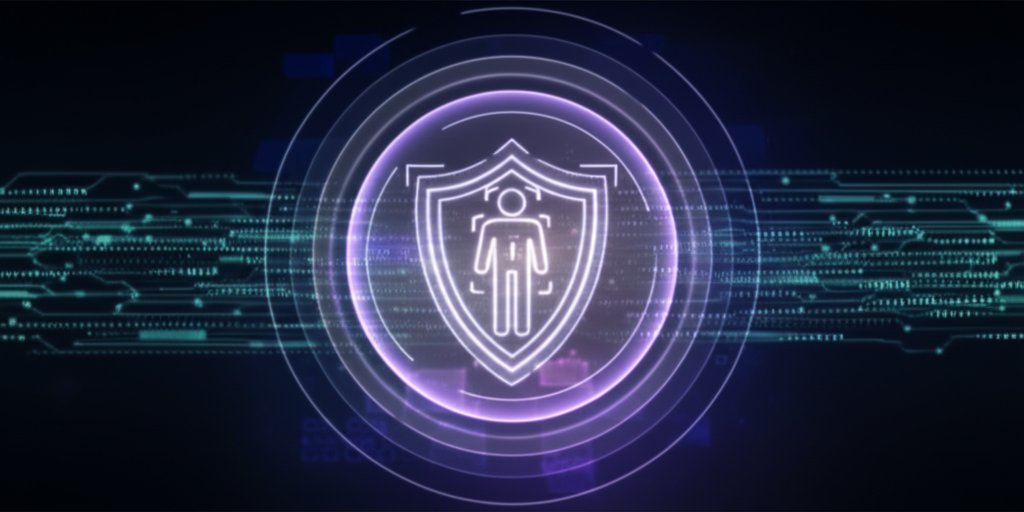The Future is Passwordless: An Easy Guide to Safer Online Security for Everyone
Are you tired of remembering complex passwords? Do you find yourself resetting them more often than you’d like? You’re certainly alone. We’ve all been there, staring at a login screen, racking our brains for that elusive combination of characters. In our increasingly digital world, passwords have become a significant source of frustration and, paradoxically, a major security weak point. In fact, stolen credentials, often involving weak or compromised passwords, were implicated in nearly half of all data breaches last year.
But what if I told you there’s a better way? A future where your online identity is more secure, more convenient, and completely passwordless? It’s not science fiction; it’s here, and it’s rapidly becoming the standard for digital authentication. As a security professional, I want to empower you, the everyday internet user and small business owner, to take control of your digital security. This isn’t about fear; it’s about understanding the practical solutions that make your online life simpler and safer, granting you ultimate peace of mind and bulletproof security without the daily hassle.
Let’s dive in and demystify the future of authentication. This guide will walk you through everything you need to know, without the technical jargon.
What You’ll Learn
- Why traditional passwords are a broken system and what’s replacing them.
- What passwordless authentication truly means, explained simply.
- The different types of passwordless methods you’re probably already using or can easily adopt.
- The significant security and convenience benefits of going passwordless.
- Practical steps for individuals and small businesses to start their passwordless journey.
- Answers to common concerns and myths about this new approach.
Why Passwords are a Pain Point (And Why We Need a Change)
For decades, passwords have been our digital gatekeepers. We’ve relied on them to protect everything from our banking accounts to our social media profiles. But let’s be honest, they’ve become a huge problem that often creates more vulnerabilities than it solves.
The Endless Frustration of Passwords
- Hard to Remember, Easy to Guess: We’re constantly told to create complex, unique passwords, but our brains aren’t built for memorizing dozens of random character strings. This often leads to us using weak, predictable passwords or, even worse, reusing the same password across multiple services. It’s a recipe for disaster.
- Vulnerable to Attacks: Traditional passwords are the primary target for cybercriminals. Phishing scams trick you into revealing them, credential stuffing uses stolen lists to try logins, and brute force attacks simply guess them repeatedly. Keylogging software can even capture your password as you type it.
- A Hidden Cost for Businesses: For small businesses, password-related issues aren’t just an annoyance; they’re a significant drain on resources. Employee password resets account for a surprising number of IT helpdesk calls, costing time and money that could be spent elsewhere. Not to mention the financial and reputational damage from a data breach caused by compromised passwords.
From Ancient Codes to Modern Security
We’ve come a long way from simple, single-factor passwords. Multi-factor authentication (MFA), like sending a code to your phone after typing your password, was a crucial step forward. It adds an extra layer of security, making it harder for attackers. However, MFA still often relies on that primary password, which remains vulnerable. So, what’s the next evolution? It’s the complete removal of the password from the equation – going truly passwordless.
Passwordless Authentication: The Simpler Path to Security (No Jargon, We Promise!)
Imagine logging in without typing a single character, verifying your identity in a way that’s inherently more secure and much more convenient. That’s the core promise of passwordless authentication.
Understanding the Core Idea
At its heart, passwordless authentication works by confirming your identity through something you have (like your smartphone or a security key) or something you are (like your fingerprint or face). Instead of relying on a secret you’ve memorized, it uses cryptographic keys that are unique to your device and account.
Think of it like this: your device holds a secret key, and the service you’re trying to log into holds a matching public key. When you try to log in, your device uses its secret key to prove its identity to the service. You then authorize this proof by unlocking your device with a PIN, fingerprint, or face scan. This sophisticated process happens seamlessly in the background, making your login feel instant and incredibly secure. Crucially, no passwords are ever transmitted or stored on servers, significantly reducing risks.
How Passwordless Differs from MFA (and Why It’s Better)
It’s easy to confuse passwordless authentication with MFA, but there’s a key distinction. MFA typically adds a second factor after you’ve entered your password, still leaving that initial password vulnerable. Passwordless authentication, however, replaces the password entirely. It often incorporates elements of MFA by requiring you to unlock your device (the “something you have” factor) with a biometric or PIN (the “something you are” or “something you know” factor). The fundamental difference is that the primary credential isn’t a memorized password, but a cryptographic key bound to your device, which is far more phishing-resistant.
Common Passwordless Methods You’re Probably Already Using
The good news is, you’ve likely encountered, or even used, several forms of passwordless authentication without realizing it! It’s not a distant dream; it’s already integrated into our daily digital lives, making our interactions smoother and safer.
Biometrics: Your Fingerprint, Your Face
This is probably the most familiar method, leveraging your unique biological traits:
- Fingerprint (Touch ID): Unlocking your phone, authenticating purchases, or logging into apps with a simple touch.
- Facial Recognition (Face ID): Gaining access to your device or apps just by looking at your screen.
You’ll find biometrics ubiquitous on smartphones, increasingly on laptops, and in many mobile apps. They offer incredible convenience and a high level of security, as your unique biological traits are incredibly difficult to spoof.
Passkeys: The Future in Your Pocket
Passkeys are rapidly becoming the gold standard for passwordless authentication. They are digital credentials tied to your devices (like your phone or computer) and securely synchronized across them (e.g., via iCloud Keychain, Google Password Manager, or Microsoft Authenticator).
- How they work: When a service supports passkeys, you create one on your device. The next time you log in, your device simply prompts you to unlock it using your existing method – your PIN, fingerprint, or face scan. That’s it!
- Key benefits: Passkeys are incredibly phishing-resistant because they’re cryptographically bound to the specific website or app you’re logging into. They also work across different operating systems and browsers, making them truly cross-platform and versatile.
- Major players adopting: Google, Apple, and Microsoft are all heavily invested in passkeys, meaning you’ll see them becoming available on more and more of your favorite services very soon.
Many major services already support passkeys. Take a few minutes to check your security settings for Google, Microsoft, and PayPal. You can often find an option to “create a passkey” or “enable passwordless login.” It’s a simple step that significantly boosts your security and convenience right now.
One-Time Passcodes (OTPs) & Magic Links
- How they work: You request a login, and the service sends a temporary, single-use code (OTP) to your verified email or phone number via SMS, or a direct “magic link” that logs you in with one click.
- Pros: Very convenient for occasional logins or during account recovery.
- Cons: OTPs via SMS can be vulnerable to “SIM swap” attacks, and email OTPs/magic links are susceptible if your email account is compromised. They’re generally less secure than passkeys or security keys.
Authenticator Apps & Push Notifications
- How they work: Apps like Google Authenticator or Microsoft Authenticator generate time-based one-time passcodes (TOTPs) or send push notifications to your registered device. When you try to log in, you either type the code from the app or simply tap “Approve” on your phone.
- Pros: More secure than SMS OTPs as they don’t rely on vulnerable phone networks.
- Cons: Still requires you to have your device and potentially manually enter a code.
Physical Security Keys: The Ultimate Shield
- How they work: These are small, physical devices (often USB sticks) that you plug into your computer or tap against your phone. They act as a highly secure authenticator, using the FIDO2 standard.
- Pros: They offer the strongest protection against phishing and sophisticated attacks because the key physically verifies the website’s authenticity before authenticating you. You literally can’t be phished if you’re using a FIDO2 security key correctly.
- Cons: Requires carrying a physical device, which can be lost or misplaced.
The Big Wins: Why Embracing Passwordless Just Makes Sense
Shifting to passwordless authentication isn’t just about keeping up with technology; it’s about fundamentally improving our digital lives by offering superior security and unparalleled convenience.
Superior Security Against Modern Threats
- Phishing Resistance: This is perhaps the biggest win. Since there’s no password to type, there’s no password for a phishing site to steal. Passwordless methods like passkeys and security keys are cryptographically bound to the correct website, meaning they simply won’t work on a fake site. This dramatically helps to reduce the effectiveness of one of the most common and damaging cyber threats.
- Reduced Attack Surface: When passwords aren’t stored on servers, they can’t be stolen in data breaches. This significantly reduces the “attack surface” for cybercriminals, making large-scale credential theft much harder.
- Protection from Credential Stuffing and Brute Force: Without passwords, these automated attacks, which rely on guessing or reusing stolen passwords, become irrelevant and ineffective.
A Smoother, Faster Online Experience
Let’s face it, convenience matters. Passwordless authentication delivers on this front in spades:
- Speed and Simplicity: Taps, scans, or quick approvals replace tedious typing. It’s often instantaneous and far less error-prone.
- No More Memorization: Imagine never having to create, remember, or reset another complex password again. Think of the mental energy you’ll save and the frustration you’ll avoid!
- Frictionless Access: Logging in becomes a seamless part of your workflow, not a frustrating hurdle that disrupts your productivity.
Real Savings for Small Businesses
For small and medium-sized businesses, the benefits extend beyond individual user experience to tangible operational improvements:
- Fewer IT Support Tickets: Reduced password-related helpdesk requests mean your IT team (or you, if you wear that hat!) can focus on more strategic, value-adding tasks, saving valuable time and money.
- Reduced Risk of Costly Data Breaches: Enhancing your security posture with passwordless authentication can help prevent expensive data breaches, regulatory fines, and irreparable damage to your brand reputation.
- Increased Productivity: Employees spend less time struggling with logins and more time on their actual work, leading to a more efficient and productive workforce.
Making the Switch: Your Passwordless Journey Starts Here
Transitioning to a passwordless world might sound daunting, but it’s a gradual process, and you can start today. Think of it as an upgrade to your digital comfort and safety, accessible one step at a time.
For Individuals: Easy First Steps
- Check Your Favorite Services: Log into services like Google, Microsoft, Apple, PayPal, or even your social media accounts. Navigate to their security or account settings. Look for options like “passkeys,” “passwordless login,” or “security keys.”
- Enable Passkeys Where Available: If a service supports passkeys, enable them! It’s usually a straightforward process that involves confirming your identity on your device. Once enabled, you’ll simply use your phone’s unlock method (PIN, fingerprint, face) to log in.
- Consider Using Authenticator Apps: For services that don’t yet support passkeys, an authenticator app (like Google Authenticator, Microsoft Authenticator, or Authy) is a great step up from less secure SMS-based OTPs for your MFA.
Don’t feel like you need to switch everything overnight. Pick one or two non-critical accounts to enable passkeys or another passwordless method. Get comfortable with the process, then gradually expand to more important services. Every password you eliminate is a step toward stronger security.
For Small Businesses: A Smart, Phased Approach
For business owners, a structured approach is best to ensure a smooth and secure transition:
- Identify Critical Systems: Determine which internal systems, customer-facing applications, and sensitive data repositories would benefit most from enhanced security. Prioritize these for passwordless adoption to maximize impact and minimize risk.
- Leverage Existing Tools: If your business uses Microsoft 365, for example, explore Microsoft Entra ID (formerly Azure Active Directory) passwordless options, such as using Microsoft Authenticator or FIDO2 security keys for employee logins. Google Workspace offers similar options for its ecosystem.
- Educate Your Employees: Clear communication and training are paramount. Explain why the change is happening (better security, easier logins) and how employees will benefit. Provide simple, step-by-step instructions and readily available support for setting up new authentication methods.
- Implement Gradually: Start with a pilot group or specific department, gather feedback, and then roll out passwordless authentication more broadly. The “hybrid” reality, where some systems remain password-based, will be common for a while, so plan for a phased approach.
The Reality of Transition: It’s Okay to Be Hybrid
Let’s be realistic: passwords won’t vanish overnight. For the foreseeable future, we’ll live in a “hybrid” world where some services support passwordless authentication, and others still rely on traditional passwords (hopefully protected by strong MFA!). The goal isn’t immediate, total password eradication, but rather a steady, strategic migration towards more secure and convenient methods wherever possible. Every password you eliminate is a win for your security and a step towards a more robust digital identity.
Common Questions & Clearing Up Myths
It’s natural to have questions and concerns about such a significant shift in how we access our digital lives. Let’s address some of the most common ones to put your mind at ease.
-
“What if I lose my phone or device?”
This is a common and valid concern. Service providers understand this and build in robust account recovery options. These often include backup methods like recovery codes (which you should store securely offline), the ability to authenticate from a trusted secondary device, or traditional email/SMS recovery processes (though these are less secure and often reserved for emergencies). The multi-device nature of passkeys also helps; if you lose one phone, you can still access your accounts from another trusted device where your passkeys are synchronized.
-
“Is my biometric data (fingerprint, face scan) stored somewhere that can be stolen?”
Generally, no. For most modern devices and systems (like Apple’s Face ID or Touch ID, or Android’s biometric authentication), your biometric data is processed and stored locally on your device in a highly secure, isolated enclave. It’s never sent to servers or shared with apps. What’s sent for authentication is a cryptographic confirmation that you’ve successfully verified yourself, not your raw biometric data.
-
“Is it really more secure than a strong password with MFA?”
Yes, especially against phishing, which is the leading cause of breaches. While a strong password combined with a good MFA (like an authenticator app or security key) is far better than a password alone, passwordless methods like passkeys and FIDO2 security keys offer superior protection. They cryptographically verify the legitimacy of the website or app you’re logging into, making phishing virtually impossible. Even the most vigilant user can sometimes fall for a sophisticated phishing attempt with a traditional password and MFA; passwordless authentication removes that vulnerability entirely.
The Road Ahead: A Truly Seamless Digital Identity
The journey towards a fully passwordless future is well underway. We’ll see continued innovation in how we authenticate ourselves, from advanced behavioral biometrics that recognize how you typically interact with your devices, to even more sophisticated hardware-backed security. The FIDO Alliance, which champions the FIDO2 and WebAuthn standards that power passkeys, is paving the way for a universally secure and interoperable authentication framework that will benefit us all.
Ultimately, the goal is a digital world where our identities are seamlessly and securely verified, without the constant friction and pervasive risk that passwords have imposed. It’s a future where your online security isn’t a burden, but an integrated, effortless experience that empowers you to navigate the digital landscape with confidence.
Conclusion
Passwordless authentication isn’t just a fleeting trend; it’s the inevitable and necessary evolution of online security. By ditching outdated passwords for more robust, user-friendly methods like passkeys and biometrics, we’re not just making our digital lives easier – we’re making them significantly safer from the relentless threats of phishing, data breaches, and identity theft.
As a security professional, I truly believe that embracing passwordless technologies empowers you to take control of your digital security in a practical, impactful way. It’s a future where convenience and robust protection go hand-in-hand, allowing you to focus on what matters most.
Why not start your passwordless journey today? Try enabling a passkey on one of your accounts and experience the difference for yourself. Then, share your results! We’d love to hear how it’s making your online life better. Follow us for more practical guides and tutorials on staying secure in the digital age.









